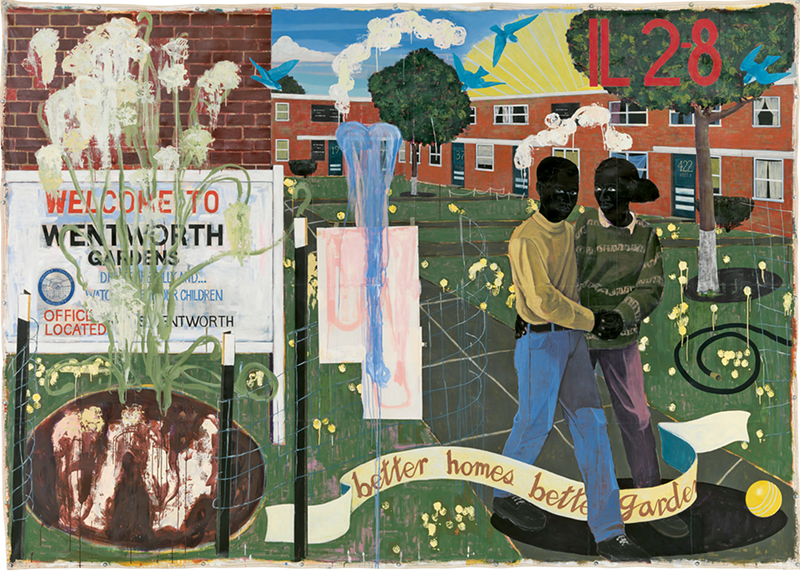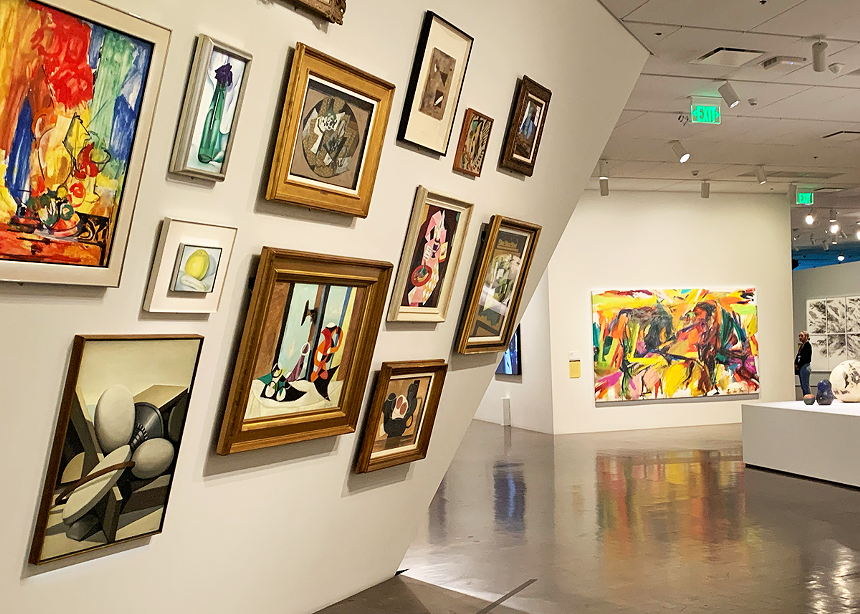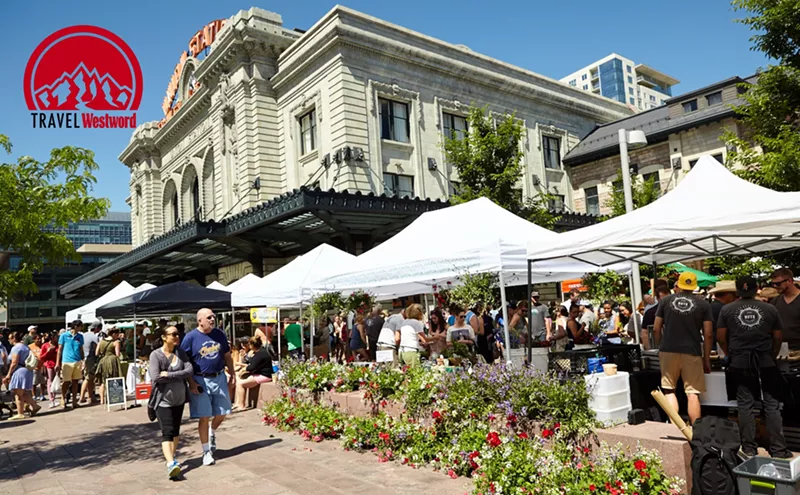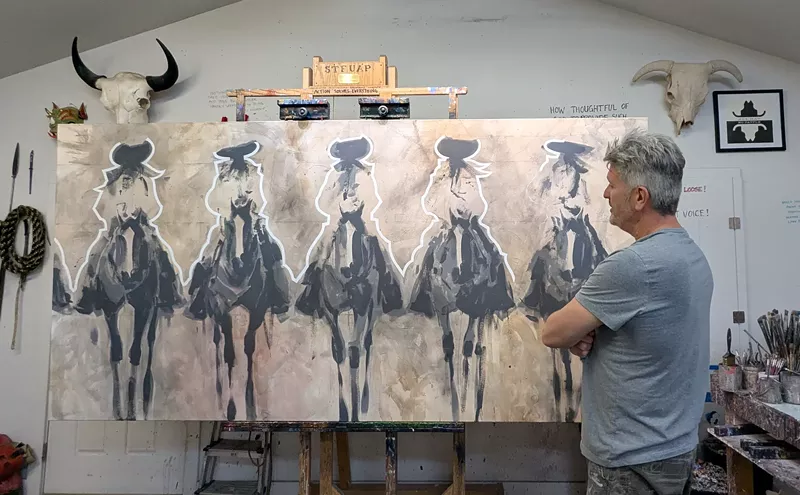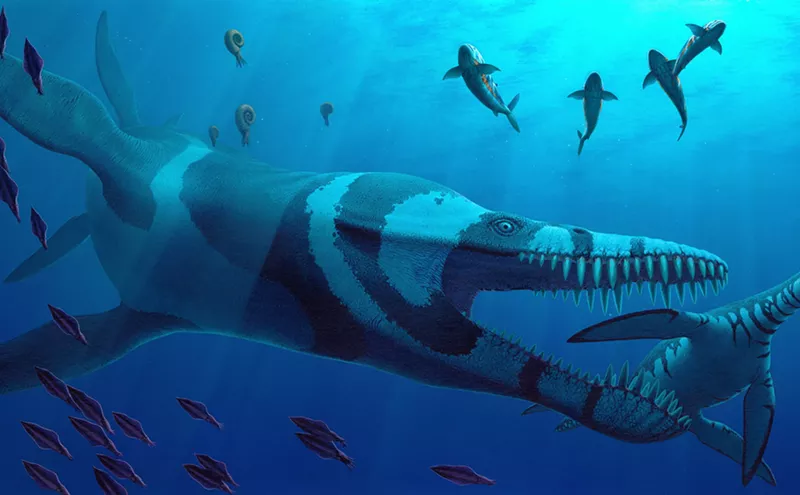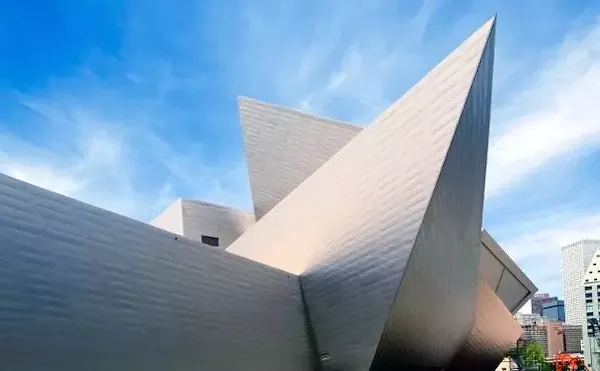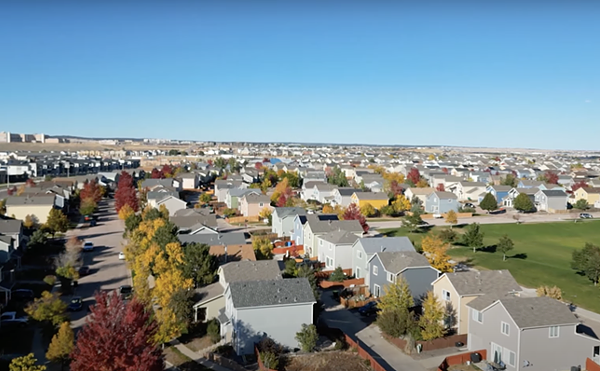After completing a major facelift of its original building in time for its fiftieth birthday in 2021, the Denver Art Museum has now concluded a multi-year effort to reinvent a trio of collections in its permanent galleries. The centerpiece is the excellent (and expansive) new interpretation of the Modern and Contemporary Art collection, curated by Rory Padeken and stretching across the third and fourth floors of the Hamilton Building.
Padeken is a newer member of the DAM team, having served as the Vicki and Kent Logan Curator of Modern and Contemporary Art for just under a year, but he brings a decade of curatorial experience from the San José Art Museum. He breezes through a tour of the finished reinstallation, including "145 objects, 108 years of history, 89 artists...and one exhausted curator," discussing the ins and outs of the large gallery without missing a beat.
The gallery is organized in twelve sections, which Padeken prefers to call "moments."
"These sections — or moments — are not organized chronologically," he explains, "but by theme, which allows conversations to emerge and blossom with a collection as wonderful as ours." These thematic sections include Uncanny Objects, Renegade Bodies, Intimacy + Intuition, Precarious Life, Gravity + Gesture, Resplendent Terror, Elemental, Material Matters, Truth + Beauty, Metamorphosis and Kinship.
The move away from arranging art in a linear timeline pushes back on older curatorial strategies. With the current arrangement, "we don't talk about art history as this big idea," says Padeken. "We talk about how these works relate to everyday life; we talk about artistic practice [and] what artists were interested in."
Abandoning old-school curation rules has paid off, resulting in an easily navigable arrangement that has treasures and surprises around every corner. A delightful cluster of still lifes greets you at the entrance, showcasing modern stalwarts such as Georges Braque, Juan Gris, Georgia O'Keeffe and Pablo Picasso at their most charming, and celebrating everyday life at all of its messy tables. These are also some of the oldest pieces in the collection.
"I...thought it was kind of funny to begin with some of our earliest work in the department's collection," Padeken explains. "If we think about the hierarchy of painting, we have history painting, portraiture, landscape and the lowly still life at the bottom. So what better way to start than with our still life, where we have fruit literally falling off the table, on a slanted wall that looks down upon us?"
Another intriguing arrangement lies just beyond, with Toshiko Takaezu's closed-form ceramics surrounded by several abstract-expressionist paintings. The effect is something like a quiet meeting, as Elaine de Kooning's "Bullfight", Joan Mitchell's "Dune" and Sonia Gechtoff's "The Beginning" seem to silently discuss color, shape and texture with the enigmatic pottery that lies between them.
These types of potent groupings are exactly what Padeken and his team are striving for, presenting "all of these artists in a unique kind of context [to discover] what kind of conversations can be brought forth from that."
Another goal of the gallery's current composition was to rediscover highlights from the collection that were stowed away, such as "Rock Formation," by digital artist Jennifer Steinkamp. The flowing projection piece was "commissioned by the museum for the opening of [the Hamilton Building] in 2006, when it was last on view, so I thought we should bring it back out again," Padeken says while standing in the dark, cave-like room that reflects the shifting, hypnotic textures of the artwork. "Yes, you can dance in front of the Steinkamp," he adds.
Lifting up diverse voices is another big initiative for the museum's overall programming, and the Modern and Contemporary gallery delivers in that category, as well, notably in the Precarious Life section. "We're bringing together a variety of artists who are looking at those lives...lost to history. Those are lives who are Black, Indigenous, queer," Padeken notes. "The artists are acknowledging those lives as being...as equally to be mourned." Standing out from several powerful pieces, Kerry James Marshall's "Better Homes, Better Gardens" is both a beautiful, textured work and one that subtly makes the section's theme more complex.
On the second floor, visitors will find a large display of double portraits spanning a century, as well as a palette of styles. It places Henri Matisse's "Two Sisters" next to to the haunting "Black Halos." by Emmanuel Taku, and many others. "It's a very curious thing that in our collection, we had all of these double portraits," muses Padeken, "and I thought, what a fun way to kind of have this celebratory moment." Some are eerie, some warm, but the overall effect is enjoyably uncanny.
This floor also includes another six gallery sections — little worlds to inhabit in quiet contemplation. In one vaulting space, Marie Watt's monumental "Blanket Story" towers over Nick Cave's festive "Untitled" tableau. Also worth staring at for an hour or two are dense abstract works such as the museum's recent acquisition "Tightrope," by Elias Simé, or "Realness," by Mark Bradford.
But even after exploring everything Modern and Contemporary has to offer, you can't stop there: The other two reopened permanent collections — the Arts of Oceania with Islands Beyond Blue on the third level of the Hamilton, and the Arts of Africa on the fourth — are worth a look. The whole package is wildly creative and exciting, cementing the importance of all three to the DAM. It's a perfect capstone to the years-long project, and, as Padeken puts it, a "momentous occasion to celebrate the art of our time."
The Modern and Contemporary Art Gallery is now open the Denver Art Museum, 100 West 14th Avenue Parkway. Get tickets here.

Audio By Carbonatix
[
{
"name": "GPT - Billboard - Slot Inline - Content - Labeled - No Desktop",
"component": "23668565",
"insertPoint": "2",
"requiredCountToDisplay": "2"
},{
"name": "STN Player - Float - Mobile Only ",
"component": "23853568",
"insertPoint": "2",
"requiredCountToDisplay": "2"
},{
"name": "Editor Picks",
"component": "17242653",
"insertPoint": "4",
"requiredCountToDisplay": "1"
},{
"name": "Inline Links",
"component": "18838239",
"insertPoint": "8th",
"startingPoint": 8,
"requiredCountToDisplay": "7",
"maxInsertions": 25
},{
"name": "GPT - 2x Rectangles Desktop, Tower on Mobile - Labeled",
"component": "24956856",
"insertPoint": "8th",
"startingPoint": 8,
"requiredCountToDisplay": "7",
"maxInsertions": 25
},{
"name": "Inline Links",
"component": "18838239",
"insertPoint": "8th",
"startingPoint": 12,
"requiredCountToDisplay": "11",
"maxInsertions": 25
},{
"name": "GPT - Leaderboard to Tower - Slot Auto-select - Labeled",
"component": "17676724",
"insertPoint": "8th",
"startingPoint": 12,
"requiredCountToDisplay": "11",
"maxInsertions": 25
}
]

